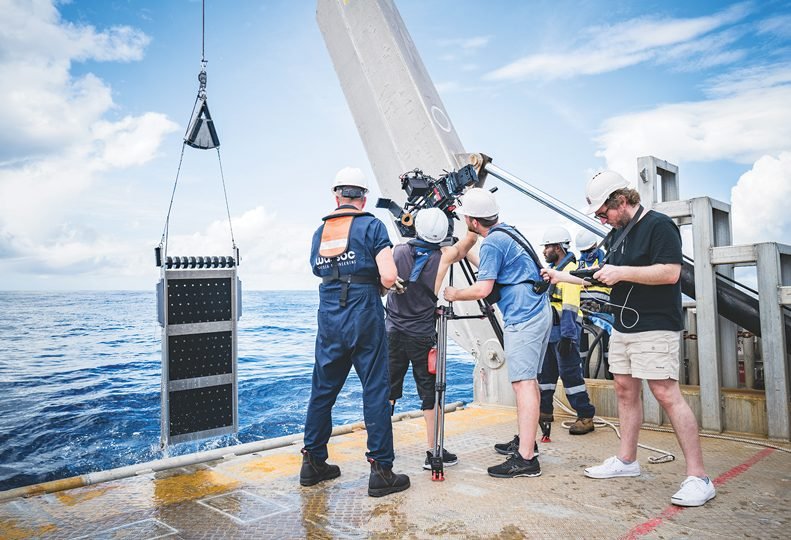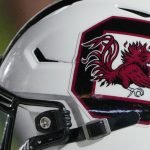The sea may be hundreds of miles away, but inside a West Plains warehouse, marine technology company Williamson & Associates Technologies Inc., or Wassoc, is quietly building the future of subsea science—designing everything from sediment-sampling drill rigs bound for Japan to tiny cameras that hitch rides on the backs of seals.
The irony is not lost on its owners either. Robert Millsap, a Spokane native who returned home in 2017 to build out the company’s Inland Northwest presence, acknowledges the amusing paradox—but he’s also confident in the company’s legacy and global reach.
“It’s strange to have a subsea engineering firm in Spokane,” reflects Millsap. “But in some ways, our work is so global … people who are buying stuff from us in Australia and Japan, they don’t care.”
That global reach is evident in the kinds of projects the company takes on: a million-dollar cone penetrometer system recently shipped to Japan to support offshore wind farms; a remote-controlled subsea vehicle that installs anchors for floating wind farms; and miniature waterproof cameras designed to be gently glued on the backs of seals, capturing footage of marine life as they swim through the Gulf of Alaska.
That kind of high-impact work is helping drive the company’s rapid growth. For the last three years, Wassoc has brought in more work than the year before, Millsap says. In 2025, the company is projected to generate $3 million in revenue, up from just under $2 million the year prior, he says. Eight of the company’s 10 employees are based in Spokane.
Wassoc recently moved into a 3,000-square-foot space at 5807 W. Thorpe, a significant upgrade from its former 600-square-foot space it occupied. The company is not fully moved in and has already filled much of its shop space with ongoing projects, prompting Millsap to consider leasing one of the neighboring bays in the business park.
“I’m scheming,” Millsap says about future expansion. “We’ve got a big project that looks like it’s going to require this much space just to build the vehicle. … I’m hoping that one (bay) in the corner stays vacant for a little bit so we can steal that one.”
Millsap runs the company alongside co-owner Max Schlereth, a Seattle-based electrical engineer who manages Wassoc’s waterfront prototype lab near Fisherman’s Terminal. The two met at Wassoc in 2011 when they were both hired to work on large-scale subsea drill and cable laying projects. After nearly a decade of collaboration, they took over the company in 2019 following the retirement of its founders.
“This is a very historic company,” Schlereth says. “We’ve been expanding in Spokane since 2019, and we’re real excited to be over there. I spend more and more time there myself.”
Williamson & Associates was founded in 1983 on Seattle’s Ballard waterfront by Mike Williamson, who, along with his longtime partner Art Wright, built a company that was once known for its pioneering subsea acoustic sonar work, helping locate sunken ships, lost aircraft, and other deep-sea targets. The company later evolved into a quiet force in subsea engineering, developing core drilling systems and underwater robotics for scientific, commercial, and government affairs.
“There are interesting books written on Mike Williamson and the things they found—gold and shipwrecks and all that kind of stuff,” Millsap notes. “Alongside those operations, the engineering team grew … doing things like subsea (robotics) that would normally be done on land.”
In particular, core drilling was something scientists were interested in, he adds. Williamson & Associates pioneered placing the core drilling rig on the bottom of the sea floor and extracting a cylinder filled with a cross-section of sediment that helps geologists further study and understand the sea floor, he says.
By the time Millsap and Schlereth took over the company in 2019, most of the deep-sea searches that the company was known for were long over. However, the engineering department had 40 years of (experience) building interesting technology, Millsap notes, and he and Schlereth had been deeply involved in that aspect of work since joining the company. When the two finally took over, they decided to focus on what they knew best: designing, prototyping, and building subsea tools and vehicles for the next generation of ocean research.
Today, the company contracts with private businesses, universities, and the National Oceanic and Atmospheric Administration, and is constantly approached by people doing next-level work. He often pitches the work Wassoc does as akin to Skunk Works, the pseudonym for Lockheed Martin’s advanced development programs, renowned for developing cutting-edge aircraft, including spy planes.
“We’re kind of Skunk Works for underwater stuff,” Millsap says. “People come to us with really interesting problems, and we try and provide a solution.”
Millsap took a nontraditional route to his career, in which he worked for and eventually became the co-owner of Wassoc. After graduating from high school in Spokane, he went to work at a machine shop, just like his grandfather had done. A client spoke to him about opportunities to work offshore on ships and research vessels, and helped him get a job on a boat headed out of the northwestern Seattle neighborhood of Ballard, that traveled to Alaska to work. As the ship’s engineer in his early 20s, Millsap learned more about the industry and decided deep-sea engineering was what he ultimately wanted to do.
“I basically cold-called Williamson & Associates and just begged them to give me a job,” he recalls. “They were reluctant at first because I didn’t have a college degree, but I came in and showed them what I could do.”
Schlereth took a different path to working at Wassoc, but was equally enthralled by the work of the organization, he says. While an undergraduate student at the University of Washington, his adviser, who was good friends with the founders of Williamson & Associates, suggested he might like the work they do and recommended he give them a call.
“They invited me down for a tour and I was immediately awestruck,” Schlereth says. “At the time they were building these really intricate, large subsea housing. … It looked like you stepped into 2001 Space Odyssey. I thought I landed the coolest job I didn’t even know existed.”
Together, Schlereth and Millsap spent years traveling the world spending time in India, Germany, and Papua New Guinea to help install and deploy their work. Millsap has since slowed down his long months out at sea, however he’s still interested in the adventure, he says.
And while the company is no longer focused on deep sea searches, they still get regular calls to search for some of the world’s most well-known cases, such as Amelia Earhart’s plane or Malaysian Airlines Flight 370—the international passenger flight that disappeared from radar in 2014. Sometimes, if the right project comes along, they’re happy to get back out to sea, he says.
“Those types of offshore operations are inherently risky,” he says. “It just depends where we are at in our growth cycle and if we have the appetite for the risk.”











